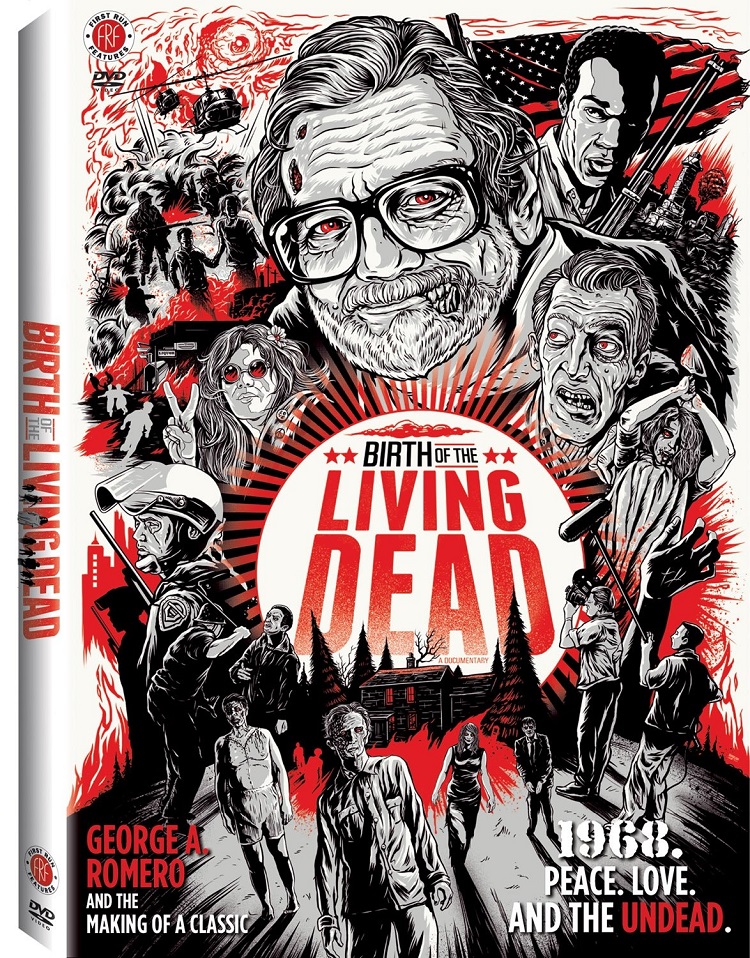
At the risk of sounding hipsterish, I’m sick of zombies. Zombies are so done. When I was a young Night of the Living Dead/Dawn of the Dead fan, that thought would have been unthinkable. Much like the zombies themselves (or, more properly in Night of the Living Dead, where the Zed-word is never spoken, the ghouls themselves), the cultural phenomenon of zombies started small, in cult films and amongst the feverish fandoms, but after shuffling slowly toward the mainstream, suddenly they broke out into a run. They’ve taken over, and are apparently here to stay.
The zombie saturation occurred somewhat concurrently with the comic book movie phenomenon and the mainstreaming of video games. It’s not necessary to posit a grand sociological shift, when a fairly simple demographic explanation exists: people who grew up with this stuff worked themselves into positions of power to get stuff made that they liked. The fannish types my age who were interested enough in media to make it themselves were also the ones who were feverishly rewatching their George Romero dead trilogy tapes (oh, for the days when Day of the Dead was the worst Romero zombie movie) and thinking, “Someday…”
With any cultural phenomenon that reaches saturation level to the point where some of the die-hard fans begin to think, “enough already,” it pays to look back on the source material, and see if there was anything really there in the first place.
As Rob Kuhns’ terrific new documentary Birth of the Living Dead demonstrates, yes, there was a reason Night of the Living Dead had such an impact. Kuhns takes us through George Romero’s background, filming commercials for local television stations, and how the need to get a 35mm camera to shoot one spot lead to the notion that, just maybe, they could start making movies.
Night of the Living Dead started off as a rip-off of Richard Matheson’s I Am Legend (though ultimately, the similarities are superficial while the differences between the two are substantial, particularly in changing Matheson’s intelligent semi-vampires into the wordless shuffling ghouls that have become the zombies we all know today). It was the second movie Romero wanted to make. His first script was a pseudo-Bergman medieval drama titled, for some unGodly reason, The Whine of the Fawn.
The major portion of Birth is a nuts-and-bolts making of, mainly told through interviews with Romero about the people who worked with him on the films, how things got done, how some of the best lines were improvised by non-actors.
This sort of documentary filmmaking has been devalued in the last decade with the ubiquity of the DVD extra. Most “making-of” docs on DVDs (often conceitedly bearing the title “featurette”) are just long press kits, where everyone loved working with everything else, and the only problems on set really made the movie better in the end.
Kuhn’s film is not that that – it has a point of view and a broad enough scope to fit Night of the Living Dead into a larger social context. This both works for and against the film. Birth of the Living Dead is at its least convincing when it tries to sum up the cultural factors that went into creating the film – the rote descriptions of late-’60s “turmoil” are a little glib and underdeveloped. Birth is on much firmer ground when discussing the impact of the film itself – how it played with narrative and social convention, particularly with the choice of a black lead and the film’s bleak, pitiless ending. It was truly a film that had to create it own audience, and spent most of its first run in grindhouse theaters or playing entirely inappropriate kid’s matinees (one still photo shows a pair of movies that Night was shown with – the terrible Dr. Who and the Daleks which features Peter Cushing as a human Dr. Who, and kaiju-film Gidrah, the Three Headed Monster).
Birth of the Living Dead‘s major triumph is that it reminds what Night of the Living Dead was, and what it wasn’t. It is not a movie about killing zombies. It isn’t campy, it doesn’t keep its tongue in its cheek. It tells a specific story, a story that happened to spawn the major horror creation of the latter 20th and early 21st century. Birth reminds us that, however many movies with zombies came before (including Jacques Tourneur’s superb I Walked With a Zombie) Night of the Living Dead was not a continuation of a horror tradition, but the start of something new.